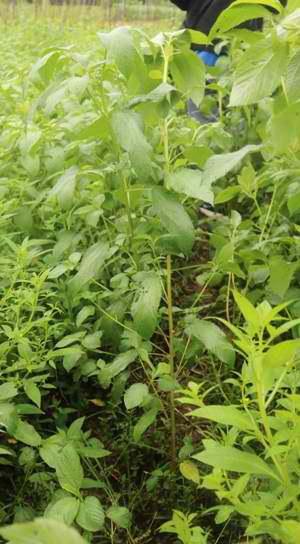Imagine a natural fiber that is 1-4 meters long, golden and silky. No wonder, the jute fiber is dubbed as the “golden fiber”. It comes from the skin (bast) of two jute plants, Corchorus capsularis and Corchorus olitorius both of which belong to the Tiliaceae family.
Jute is one of the strongest vegetable fibers and ranks second to cotton in terms of production. The top two jute producing countries in the world are India and Bangladesh. According to the 2017 World Atlas, India’s annual production is estimated at more 1.968 million tons while Bangladesh has an estimated at 1.349 million tons annual production.

In the Philippines, jute plant is called “saluyot” which is mostly abundant in Ilocos and Western Visayas. According to the Philippine Fiber Industry Development Authority (PhilFIDA), jute grows in all types of soil ranging from clay loam to sandy loam. It thrives best in tropical countries where climate is hot and moist. It is mostly a rainfed crop with little need for fertilizer or pesticides. Jute is an annual crop taking about four months (April-July or May-August) to grow.
Growing jute is environment-friendly. The Food and Agriculture Organization (FAO) stated that, cultivating jute in crop rotation enriches the fertility of the soil for the next crop. It also does not generate toxic gases when burnt.
Jute as sack cloth
As a versatile fiber, jute has many uses. It can be blended with other fibers and materials. And since it is biodegradable and recyclable, designed to break down after sometime, it is used as containers for planting young trees, as well as geotextiles for soil and erosion control.
One of the most economically-important uses of jute fiber even during the earlier period is as sack cloth, an effective packaging material for grain commodities. Its innate durability as a fiber makes it the best option for storing grains protecting them from sunlight and heat, and keeping its quality and germination capability intact. It can also be reuse multiple times proving beneficial for bulk postharvest handling of agricultural products.
In the Philippines, some of the major users of sack cloth are the coffee and cacao industry. Unfortunately, due to minimal production area for jute, the Philippines has to import this natural fiber to cope with the demand.
According to the International Jute Study Group, an intergovernmental organization established under the auspices of the United Nations Conference on Trade and Development, for the last five years (20016-2010), the Philippines has been importing jute and other bast fibers at a steady increasing rate with trade value of US$648,488 in 2006 to US$918,368 in 2010.
Research on jute sack
Seeing the potential of this crop and possibly ease the country’s importation on jute fiber, Agriculture Secretary Emmanuel Piñol instructed the Bureau of Agricultural Research (BAR) and the Philippine Fiber Industry Development Authority (PhilFIDA) to study the jute industry particularly, as a source of material in sack cloth to increase by-product utilization and development, as well as reduce importation cost.
In response, BAR, as the lead agency for research in agriculture, has supported a project, “Assessment on the Utilization of Jute Sacks as Packaging Materials” which is currently being implemented by PhilFIDA. Led by Dr. Remedios V. Abgona, chief of PhilFIDA’s Fiber Utilization and Technology Division, the study aims to provide the government, as well as prospective investors, the necessary information on jute fiber production for policy formulation, decision-making, and needed interventions for jute production and its consideration as packaging material. Part of the expected output is to come up with maps of suitable sites for jute production and protocols and manual for jute plantation establishment, and jute sack manufacturing and processing that will help and boost the jute fiber industry in the country.
The study is just starting but PhilFIDA is positive on its eventual impact in the jute industry and the fiber sector as a whole. By determining and studying the jute industry as source of jute sacks, it would lead to necessary interventions from the government including job generation, increase income for farmers, increase by-product utilization and development, and most importantly, reduce importation cost of jute sacks.
Complementing the PhilFIDA study is another BAR-supported project, “Comparative Analysis of Jute Production and Marketing in Region 5 Relative to Other Major Jute Producing Areas” being implemented by DA-Regional Field Office 5-Bicol Integrated Agricultural Research Center. The study will look into the production and marketing aspects of the jute industry specifically in major jute producing areas of the country. ### (Rita T. dela Cruz) – bar.gov.ph

